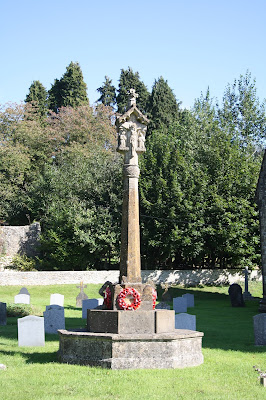Almost 80 years ago at lunchtime on 26 October 1942 a lone German Junkers 88 bomber attacked the Devonshire coastal town of Seaton. The fast twin engine light bomber dropped a stick of bombs achieving a direct hit on Seafield House which stood on the sea front between Sea Hill and Castle Hill, only a short distance from the site of some of Seaton’s wartime coastal defences. A searchlight emplacement was positioned just 200 yards away below the cliffs, while on the cliff top was a coastal artillery battery which included two 6-pounder Hotchkiss anti-tank guns.
Was the German bomber crew aiming for the artillery battery, or was their mission an indiscriminate attack on a seaside resort – one of the later Baedeker raids the Germans carried out in reprisal for RAF Bomber Command’s successful raids on Germany’s Baltic Ports?
 |
| The sea front at Seaton in Devonshire. The World War Two coastal artillery battery was sited just beyond the thatched structure on the skyline at the extreme left of the picture. |
The owner of Seafield House
was a retired army officer. Sadly, Major
and Mrs Cartwright were killed along with three others - a young WRNS officer
named Dorothy Downes Wilkin whose family lived at nearby Membury, a Miss
Florence Sercombe and an elderly lady by the name of Mrs Eleanor Ross.
A young lady of 14 named
Muriel Turl, who was “in service” and working in the kitchen when the house was
hit, had a remarkable escape. She was
buried in the rubble for four hours until rescued relatively uninjured. The two other members of the household staff,
the cook and the cleaner, had not turned up for work that day – a very
fortunate absence!
The Jubilee Clock Tower, erected
to commemorate Queen Victoria’s Golden Jubilee, stood behind and above Seafield
House. It survived the bombing although
the clock stopped at 1.20 pm precisely, the time of the raid, eventually being
repaired some years later.
Seafield House was not
rebuilt or replaced after its destruction.
Today the open space on which it stood allows a clear view from the sea
front up to the Jubilee Clock Tower and Seafield Gardens.
 |
| The Jubilee Clock Tower at Seaton in Devonshire. The steps and gardens leading to the Clock Tower occupy the site of Seafield House which was destroyed in the German air-raid of 26 October 1942. |







